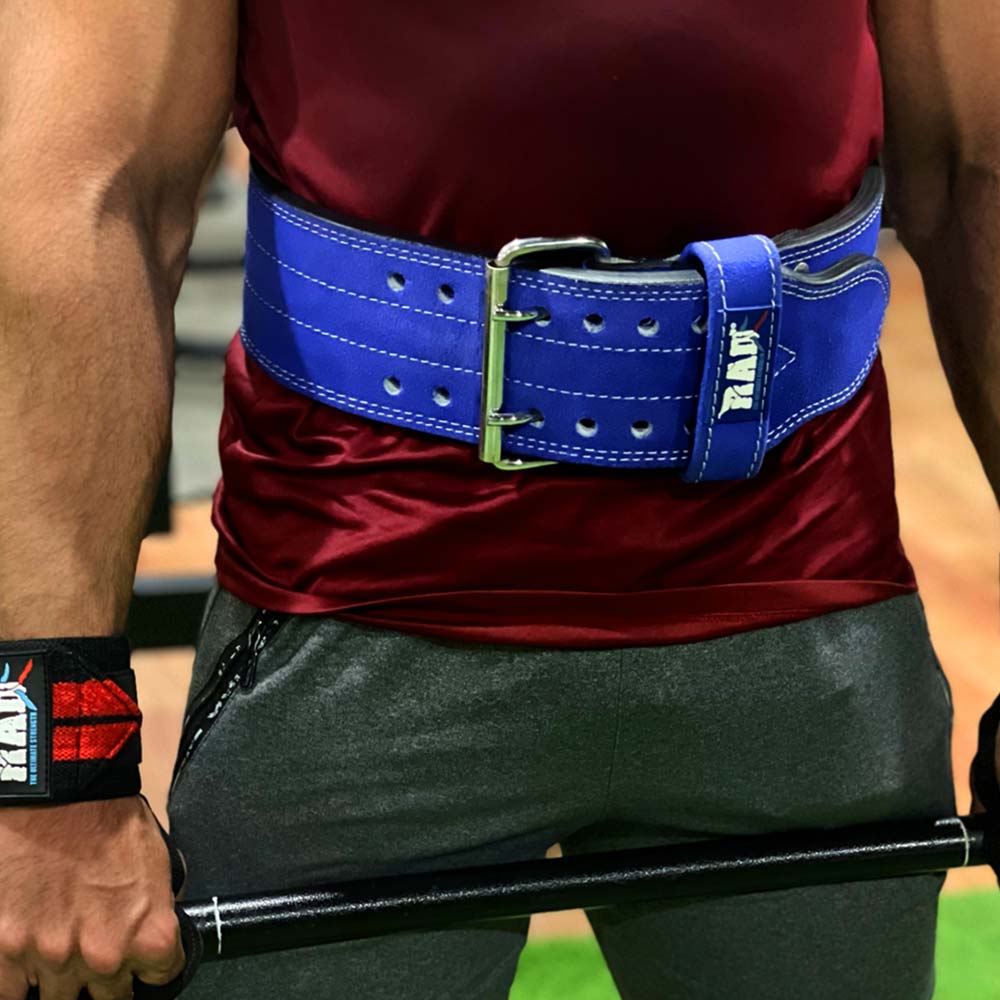
Lifting Belt: Protecting Your Back and Boosting Your Gains
Share
Weight lifting is a great way to build strength, gain muscle and get fit. But it comes with the risk of injury especially to the lower back. To minimize the risk and maximize performance many weightlifters wear a Weight Lifting Belt.
Protect Your Back
Understanding the Vulnerability of the Lower Back
- The lower back is prone to strain and injury during weight-lifting exercises.
- Bad form, too much load, and repetitive movement can cause back pain and long-term damage.
Injury Prevention
- A Lifting Belt supports the lower back and provides stability, reducing injury.
- Maintains proper spinal alignment and limits movement.
Increasing Lifting Performance
- When back is supported, lifters can generate more power and lift more weight.
- More stability means better force transfer and muscle engagement.

Benefits of Weight Lifting Belt
Core Support and Stability
- Weight lifting Belt gives external support to the core muscles (abdominals and lower back)
- This stability allows for a more controlled lift and reduces stress on the spine.
Improved Intra-abdominal Pressure
- Wearing a Weightlifting Belt increases intra-abdominal pressure which stabilizes the spine further
- This pressure supports the spine from the inside reduces the risk of injury and improves lifting performance.
Mind-Muscle Connection
- A weight lifting belt is a tactile cue for the lifter to engage their core and maintain proper form.
- This mind-muscle connection can lead to more effective and efficient lifting.
Types of Weight Lifting Belts
Powerlifting Belt
- For maximum support and stability for heavy lifts.
- Wider and thicker, provides more abdominal and lower back support.
Olympic Lifting Belt
- Narrower and more flexible, allows for more mobility during dynamic movements.
- Still provides support but prioritizes movement.
Velcro Belts
- For lighter lifts and functional fitness exercises.
- Adjustable and easy to put on, but less rigid compared to leather belts.
How to Choose a Weight Lifting Belt
Proper Fit and Sizing
- The Belt should fit around your waist without restricting breathing or movement.
- Measure your waist and check the sizing chart from the manufacturer.
Material and Construction
- Leather Weight Lifting Belts are durable, stiff and long lasting support.
-
Nylon belts are lighter, more flexible and suitable for more exercises.
Buckle or Lever System
- Choose between a traditional buckle or a lever system based on your preference and ease of use.
- Both options can provide secure fastening.

Proper Technique and Form
Maintaining a Neutral Spine
- Keep your spine neutral throughout the lift.
- Don’t arch or round your lower back.
Engaging the Core Muscles
- Engage your core before you lift.
- This means bracing your abs and creating intra-abdominal pressure.
Gradual Weight Progression
- Build up strength gradually and make sure your body is ready for heavier loads.
- Rushing into heavier weights can hurt you.
Common Mistakes to Avoid
Overreliance on the Belt
- A Belt should enhance your lifting technique, not replace it.
- Avoid relying solely on the belt and neglecting proper form and core engagement.
Wearing the Belt Too Tight
- The belt should be snug but not too tight.
- Too much pressure can constrict breathing and movement.
Neglecting Other Forms of Core Training
- A weight belt shouldn’t replace core training exercises.
- Do exercises that strengthen your core without using the belt.
When to Wear a Belt
Heavy Compound Lifts
- Squats, deadlifts and overhead presses that put a lot of stress on your lower back.
- Wearing a Gym Belt can help during these lifts.
Personal Preference and Confidence
- Some lifters wear a belt for most exercises for added stability and peace of mind.
- Experiment and find what works for your body and lifting style.
Maintaining and Cleaning Your Weight Lifting Belt
Proper Storage
- Store your weight lifting belt in a cool, dry place that is not directly sunlight.
- Please don’t leave it crumpled or folded, this can damage the belt’s structure.
Cleaning and Maintenance
- Follow the manufacturer’s instructions for cleaning your belt.
- Leather belts may need to be conditioned occasionally.
Tips for Safe and Effective Weight Lifting
Warm-Up and Stretching
- Prioritize a comprehensive warm-up routine that includes dynamic stretches and mobility exercises.
- This prepares your body for the workout and reduces the risk of injuries.
Progressive Overload
- Gradually increase the intensity and volume of your workouts to promote continuous gains.
- Aim for a progressive and sustainable approach rather than sudden leaps in weight.
Listen to Your Body
- Pay attention to any discomfort, pain, or signs of fatigue during your workouts.
- Rest when needed, and seek professional advice if you experience persistent pain or injuries.
